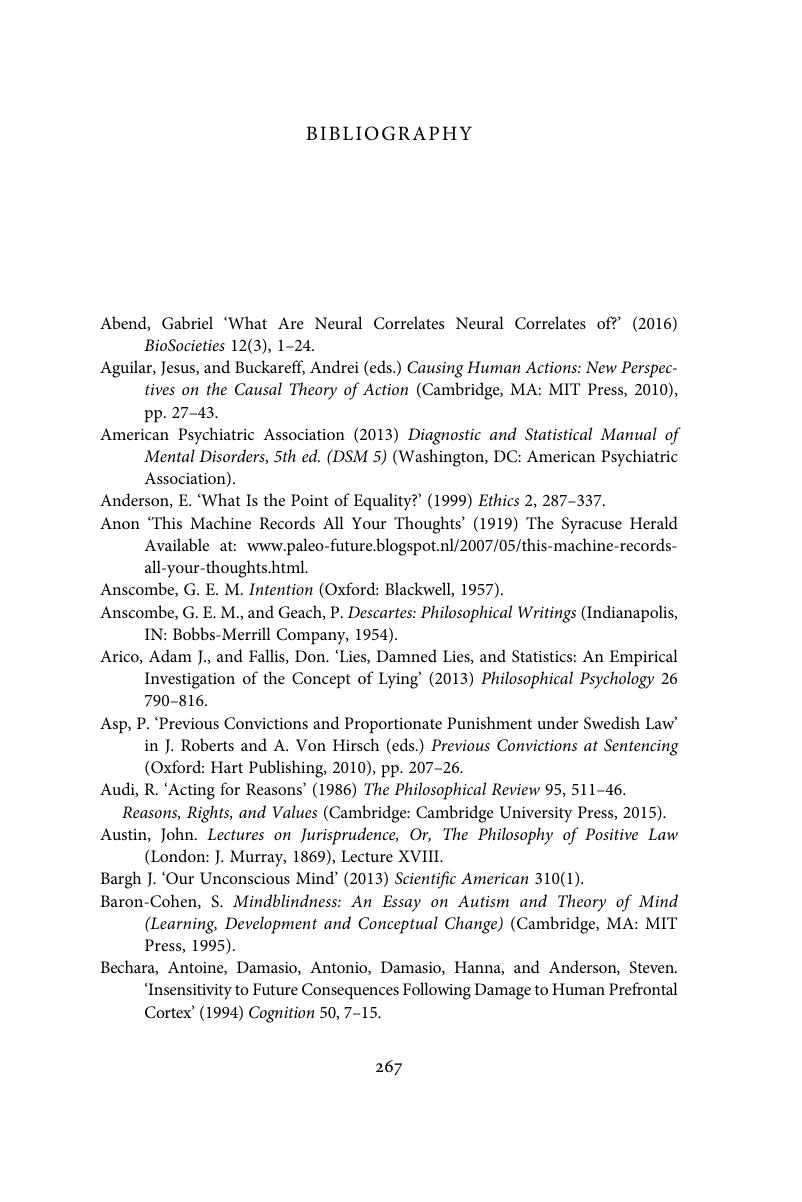Bibliography
Published online by Cambridge University Press: 28 April 2018
Summary

- Type
- Chapter
- Information
- Neurolaw and Responsibility for ActionConcepts, Crimes, and Courts, pp. 267 - 290Publisher: Cambridge University PressPrint publication year: 2018



